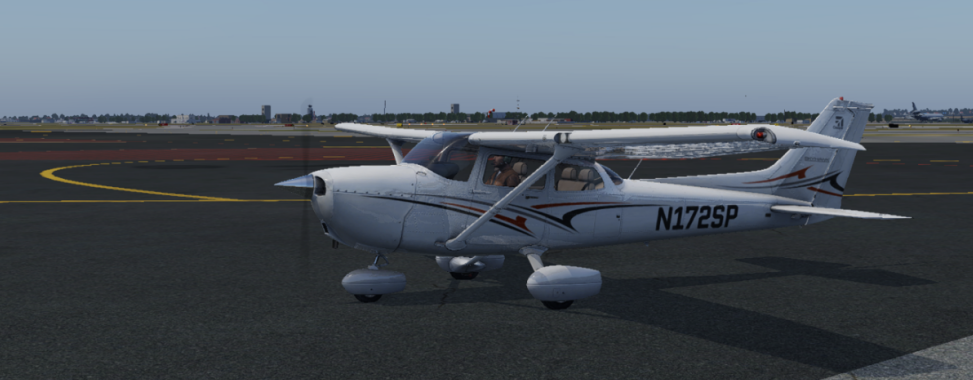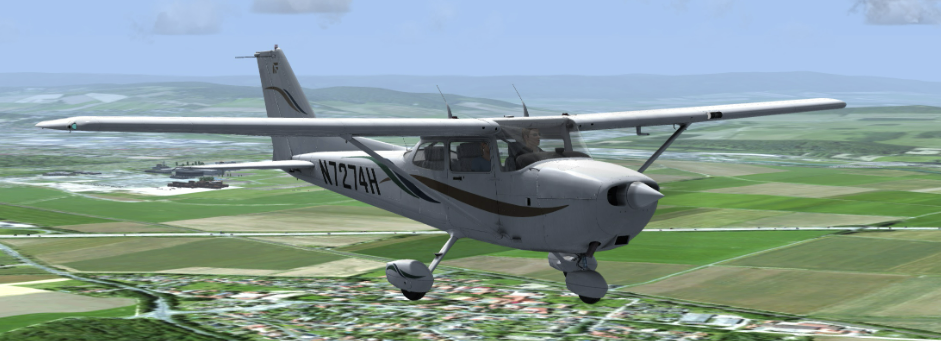 Cessna 172 Skyhawk within X-plane.
Cessna 172 Skyhawk within X-plane.
Flight simulators have revolutionized the way pilots train, especially for those at the start of their aviation careers. They’re not just high-tech video games; they’re sophisticated tools designed to mimic real-life flying. Getting the right simulator software can make a massive difference in a pilot’s training journey.
Several flight simulator software options are on the market, each with unique features and benefits designed to enhance piloting skills. Among the frontrunners, X-Plane, Microsoft Flight Simulator, and Prepar3D are some of the best. Software like X-Plane is renowned for its realistic flight dynamics, making it a go-to for many training schools. Microsoft Flight Simulator offers an immersive, almost photographic rendition of the world, a great aid for visual learning and navigation practice. Prepar3D, often favoured by flight schools, offers a wide range of aircraft, ideal for both beginners and advanced trainees.
Choosing the best flight simulator involves assessing several factors. You’ll want to look at the realism of flight dynamics, the variety of training, and the range of aircraft models available. A simulator that offers detailed weather patterns, emergency procedure training, and comprehensive navigation aids often provides a more rounded training tool.
It’s not just about flashy graphics or extra features. The best simulator ties closely to real-world pilot experiences, aligning training closely with what a pilot would encounter in actual flying. Software programs like these aren’t just for practice; they become an integral part of the learning process, bridging the gap between textbook knowledge and real cockpit experience.
 Cessna 172 Skyhawk within Microsoft Flight Sim.
Cessna 172 Skyhawk within Microsoft Flight Sim.
The Transformative Experience of Flight Simulator Training
Flight simulators serve as an intricate bridge between theoretical learning and hands-on flying. With these systems, aspiring pilots can dive into manoeuvres, emergency situations, and navigation techniques without leaving the ground. This offers a controlled environment to make mistakes and learn from them, something that’s invaluable in aviation training.
One of the big advantages is the ability to practice complex tasks repeatedly. Whether it’s navigating through challenging weather or mastering tricky landings, having the option to redo enhances learning. This practice reinforces both knowledge and confidence in a virtual cockpit setting where instant feedback helps tighten skills.
Learning critical procedures and adapting quickly to in-flight changes are key skills for pilots. Simulators allow for in-depth training in these areas by simulating real-time issues. This prepares pilots for a variety of situations they might face, building not just skill but also a calm and composed approach in challenging circumstances.
Beyond the technical skills, simulators help boost a pilot’s decision-making abilities. Facing new situations within the simulator environment trains one to think on their feet. It creates a level of comfort with both routine and unexpected situations, which is crucial for real-world flying.
For aspiring pilots, simulator training is more than just additional practice; it’s a foundation for developing a keen understanding of aviation. While nothing can fully prepare someone for the first solo flight, simulators go a long way in easing the transition from student to confident pilot.
 Cessna 172 Skyhawk within Prepare3D.
Cessna 172 Skyhawk within Prepare3D.
Balancing Virtual Training with Real-World Flight Practice
While flight simulators offer a plethora of benefits for pilot training, they do come with limitations. Simulators operate in a controlled, predictable environment, which isn’t always reflective of real-world conditions. Consequently, they can’t replace the need for actual flight experience.
One of the challenges with simulators is their inability to fully simulate the physical sensations of flying, such as the G-forces or vibrations of an aircraft. This lack of physical feedback can sometimes lead to a distorted understanding of flight operations. So, while simulators are excellent for procedural and emergency training, they need to be complemented with real flight hours to ensure a comprehensive understanding.
Despite these limitations, simulators are invaluable for practicing specific scenarios that might be too risky or impractical to perform in real aircraft, like engine failures or severe weather conditions. This makes them pivotal in the preparation phase, effectively preparing aspiring pilots for potential real-world challenges.
For the best results, a hybrid approach combining both simulation and real-world practice is essential. Simulators work perfectly as a precursor to actual flying lessons, helping reduce the learning curve when transitioning to handling a real plane.
Ultimately, while virtual training provides a solid foundation, it’s the combination with real flight hours that produces capable and confident pilots. This well-rounded approach ensures that trainees don’t just learn to fly—they thrive in the aviation world.